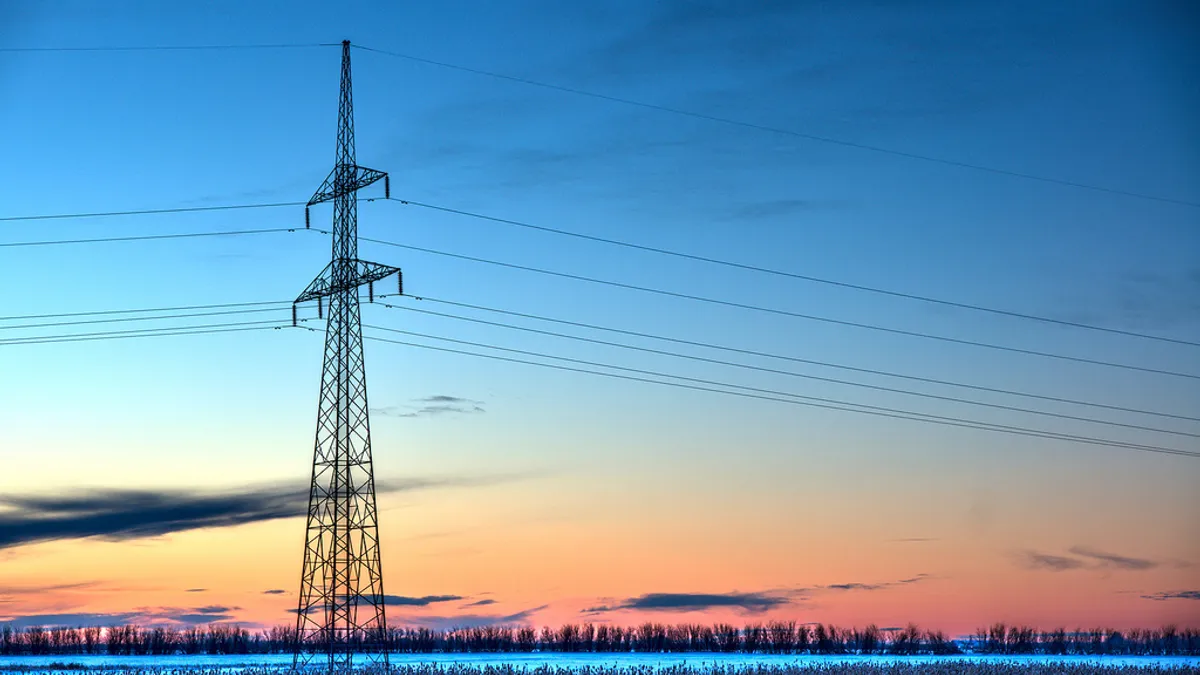Dive Brief:
-
Nebraska-based energy developer Tenaska on Friday filed a complaint with federal regulators, alleging that the Southwest Power Pool's (SPP) multi-million dollar increase in charges related to interconnecting a wind project are unjust and unreasonable.
-
According to Tenaska's complaint, the grid operator initially told the company that its 242 MW Clear Creek project in Missouri, which began commercial operation last year, would require $16 million in network upgrades. The developer says SPP later more than doubled those estimates to $33.5 million, and ultimately proposed Tenaska pay $99 million in charges related to interconnection upgrades.
-
Tenaska and the renewables industry say the additional costs, nearly $66 million over SPP's second estimate, highlight the need for FERC to reform transmission planning and cost allocation in order to provide renewable energy developers with transparency and certainty in developing new projects.
Dive Insight:
Developers are required to coordinate with grid operators before a project is brought online in order to determine whether the project's additional capacity would adversely impact the region's system and if upgrades are warranted. But lack of guidance around how costs related to such studies are allocated can leave generators at risk for up to hundreds of millions of dollars in upgrade costs associated with interconnecting new renewables projects to the grid, according to a March report commissioned by the American Council on Renewable Energy (ACORE), the American Clean Power Association and the Solar Energy Industries Association.
As a result of high interconnection costs and related uncertainty, bottlenecks and project delays have prevented hundreds of renewables projects from reaching commercial operation, according to the report. At the end of 2019, 734 MW of projects were stuck in interconnection queues across the U.S. — and almost 90% were storage and renewables, the report found.
In the case of Tenaska, SPP issued an initial study on the cost of upgrades that would be required to accommodate the Clear Creek project onto the grid, estimating necessary upgrades would cost the developer about $34 million. But following the exit of another project higher in the queue, SPP revisited the study and, two years after it gave Tenaska the $34 million estimate, raised costs to $99 million.
SPP cites an additional 4,500 MW of resources that were mistakenly omitted by the grid operator from its initial interconnection study for the increased costs, according to the complaint, and says related capacity overloads require the additional investment. But Tenaska argues it is inappropriate to allocate all those costs to its project alone, given those bottlenecks existed before Clear Creek was in operation.
The issue highlights the need for FERC to more clearly define how system upgrade costs related to interconnection should be allocated, in order to provide developers certainty and more efficiently bring wind and solar projects online, according to Tenaska's complaint.
An SPP spokesperson said the grid operator is still reviewing the complaint, and declined to comment.
"[T]o allow SPP to hold Tenaska Clear Creek responsible for costs of upgrades that, at best, were not promptly identified due to SPP's mishandling of the process and appear necessary to address pre-existing reliability issues would send a signal that renewables developers nationwide cannot count on transmission providers complying with minimal standards of care when conducting studies and that customers simply cannot count on the results of the interconnection process," Tenaska wrote in its filing.
"It is with reluctance that we have filed a complaint with FERC, but the filing brings an important problem related to the SPP affected system study process and, more broadly, the question of the appropriate method of allocating interconnection upgrade costs, to FERC's attention," Nick Borman, senior vice president of engineering and construction at Tenaska, said in a statement.
"If renewable, or for that matter any, generation projects are to be added to the country's generation base, certainty around interconnection costs is critical," he added.
The filing details a wider "negative feedback loop" issue, as laid out by ACORE's study, said Gregory Wetstone, CEO of ACORE, in an emailed statement. Under such a cycle, generators frustrated with lengthy delays and rising upgrade costs drop out of the interconnection queue, triggering new studies from the grid operator that lead to even higher costs, "exacerbating the problem," he said.
"In short, reforming transmission planning and cost allocation is critical," said Wetstone. "The current processes are simply not working to deliver the affordable clean energy that states, businesses and consumers want and deserve."














